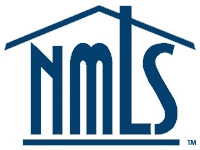Can I Cancel My Mortgage Insurance?
If you’re a homeowner with a mortgage, you’ve likely come across something called mortgage insurance. Mortgage insurance, also known as private mortgage insurance (PMI) for conventional loans or mortgage insurance premium (MIP) for FHA loans, is a requirement when you don’t have a sufficiently large down payment. It’s an additional cost that can add up over time, leading many homeowners to wonder: can I cancel my mortgage insurance?
Understanding Mortgage Insurance
Before diving into how to cancel mortgage insurance, it’s important to understand what exactly it is. Mortgage insurance protects the lender in case you default on your loan. For conventional loans, you’ll typically need PMI if your down payment is less than 20% of the home’s value. FHA loans, on the other hand, require MIP regardless of the down payment percentage.
Requirements for Cancelling PMI
1. Reaching 20% Equity
For conventional loans, you can request to cancel your PMI once your equity in the home reaches 20%. This means that you need to have paid down your mortgage so that the amount you owe is 80% or less of the home’s current appraised value. You can keep track of this through your monthly mortgage statements or by consulting with your lender.
2. Automatic Cancellation at 22% Equity
Even if you don’t request cancellation, mortgage servicers are generally required to automatically cancel PMI once your equity reaches 22% of the original home’s value. This means you won’t have to keep paying this insurance any longer once you hit this threshold.
Requirements for Cancelling MIP
FHA loans have slightly different rules. For FHA loans acquired after June 3, 2013, if your down payment is less than 10%, MIP cannot be cancelled, and it will remain for the life of the loan. However, if your down payment is 10% or more, MIP can be cancelled after 11 years. For those with FHA loans before this cut-off date, you may be able to request cancellation after hitting 20% equity, similar to how conventional loans work.
Steps to Cancel Mortgage Insurance
1. Get a Home Appraisal
If you believe you’ve reached 20% equity in your home, the next step is to get a home appraisal. This appraisal will help determine the current market value of your home and whether you meet the 20% equity threshold. In most cases, your lender will require you to hire an approved appraiser.
2. Submit a Request to Your Lender
Once you have the appraisal, submit a written request to your lender to cancel your mortgage insurance. Be sure to include all required documentation, such as the appraisal report. The lender may have specific forms or procedures to follow, so check with them for details.
Considerations and Tips
Before you proceed with cancelling your mortgage insurance, make sure to review your loan agreement and consult with your lender. There may be additional requirements or fees for cancelling PMI or MIP.
Additionally, keep in mind that the housing market can fluctuate, which can affect your home’s value and your ability to cancel mortgage insurance. Regularly monitor your home’s equity and reassess your situation as needed.
Cancelling mortgage insurance can lead to significant savings over time, but it’s important to go through the proper steps and ensure you meet all the criteria.
Whether or not you can cancel your PMI depends on several factors, such as:
• Your mortgage type (conventional, Fannie Mae, Freddie Mac, FHA/VA, etc.)
• Age of your loan
• Substantial home improvements made after the closing of your loan.
• Your payment history
• How much equity you have in your home
Your first step is to send your request in writing or sign in to your online account.
It will take about 30 days for us to review your request and get back to you.
Note: PMI is required or some loans and cannot be removed. Examples include:
- USDA loans
- FHA loans closed before January 1, 2001
- FHA loans closed after June 3, 2013
- Loans with a payment 30 or more days past due in the last 12 months.














